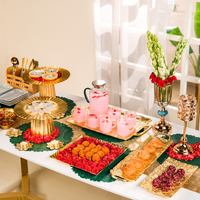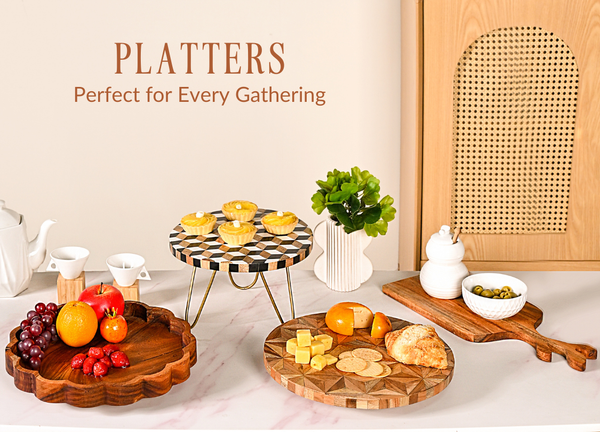Decorating our homes goes far beyond choosing beautiful pieces; it’s about creating an environment that resonates with peace, purpose, and personal meaning. And, for those who appreciate the spiritual essence in their surroundings, placing a Buddha statue at home brings more than just aesthetic appeal—it brings a sense of calm, a reminder of mindfulness, and a connection to deeper values. But did you know that the Buddha’s position in the house can impact the energy of your space?

In this post, we’ll explore the symbolism behind Buddha statues, the significance of Buddha’s posture, and why the placement or position of Buddha matters in the home. By understanding these elements, you’ll be able to select and position a Buddha statue that fits both the aesthetic and spiritual essence of your space.
The Symbolism - Meaning of Buddha Statue
A Buddha statue is more than an art piece; it’s a symbol of peace, wisdom, and enlightenment. Different Buddha statues convey various meanings depending on their postures and hand gestures, or “mudras.” From seated to reclining poses, each statue carries its own essence, inviting certain energies and symbolism into your home.
1. Seated Buddha: The seated Buddha is one of the most common and represents meditation, groundedness, and inner peace. This position of Buddha embodies a calm demeanor, offering a sense of stability and tranquillity in your home.
2. Reclining Buddha: This Buddha posture shows the Buddha lying on his side, symbolising his final moments before entering Nirvana. It’s a powerful reminder of life’s impermanence and represents peace and the attainment of spiritual liberation.
Shoppers also buy: Candles and Candle Holders
3. Standing Buddha: This posture is associated with grace, protection, and blessings. Standing Buddhas often appear with one hand raised, signifying courage, reassurance, or compassion.
4. Buddha with a bowl: This lesser-known Buddha position represents alms or charity, reminding us of humility and the art of giving. It’s a perfect addition to homes where people seek to live mindfully and appreciate life’s simple joys.
Each of these Buddha positions adds unique energy and meaning to a space, encouraging qualities like mindfulness, compassion, and calm. Understanding the meaning of Buddha statues allows you to bring in not just beauty but also purpose to your decor.
The Importance of Placement - Buddha Position for Home
While choosing the right Buddha posture is important, knowing where to place it in your home adds another layer of intention to your decor. Let’s explore some traditional guidelines and personal approaches for positioning a Buddha statue.
Traditional Placement Guidelines
Traditionally, Buddha statues are positioned in spaces that encourage reflection and mindfulness. You might see them in entryways, living rooms, or gardens—areas where they greet people warmly or provide a focal point for quiet moments. According to traditional decor practices, such as Feng Shui, the placement of Buddha affects the energy flow within a home.
1. Entryway: Placing a Buddha statue in your entryway sets a calming tone right from the moment someone steps into your home. The entryway Buddha position is meant to welcome peace, inviting positive energy into your space.
2. Living Room: A Buddha statue in the living room serves as a gentle reminder of peace and mindfulness for everyone in the household. It’s best to place it on a high shelf or a dedicated table, keeping it elevated as a sign of respect.
3. Garden: For those who love nature, placing a Buddha statue outdoors adds serenity and a meditative vibe to your garden. It’s a common position of Buddha in outdoor spaces, allowing you to reflect peacefully amidst nature.
4. Meditation or Yoga Room: If you have a dedicated room for yoga or meditation, a Buddha statue here can enhance the practice. The energy of the statue aligns well with the room’s purpose, creating a sanctuary of mindfulness and balance.
Have you checked: Incense Sticks For Home Decor
Feng Shui and Buddha Placement
Feng Shui, the ancient Chinese practice of harmonising energy in spaces, has specific guidelines for placing Buddha statues. In Feng Shui, the Buddha statue is believed to enhance positive “chi” or energy in the home.
1. Facing the Front Door: One popular Feng Shui recommendation is to position the Buddha facing the front door. This setup is thought to ward off negative energy and welcome good fortune into the home. It’s an ideal Buddha position for entryways or open-plan living spaces.
2. West or Northeast Facing: In Feng Shui, placing a Buddha statue in the West or Northeast part of the home can amplify positivity, harmony, and personal growth. These directions are associated with wisdom, family harmony, and personal growth.
3. Avoiding Certain Rooms: Feng Shui advises against placing Buddha statues in bathrooms, bedrooms, or directly on the ground. These placements are generally considered disrespectful. Instead, opt for elevated positions and respectful spaces.
4. Garden Feng Shui: Placing a Buddha statue in the garden adds a layer of tranquillity, helping balance the energy of your outdoor spaces. A peaceful Buddha position outdoors, surrounded by greenery, is especially beneficial for homes with limited indoor space.
Also check: Ceramic planters
Personal Meaning and Intention
Beyond traditional and Feng Shui guidelines, placing a Buddha statue in your home is a personal decision. If there’s a specific Buddha posture that resonates with you—whether it’s the calming seated Buddha or the graceful standing Buddha—you can create a space that’s meaningful to you.
For instance, some people may feel a deeper connection with the reclining Buddha position, placing it somewhere visible as a reminder of peace in the face of life’s challenges. Others might choose a Buddha posture that symbolises compassion and place it in their living room to foster a loving atmosphere in the home.
The position of Buddha can also reflect your personal journey. For someone who practices mindfulness daily, a meditation room with a seated Buddha might enhance their practice. Similarly, if you’re focusing on growth, positioning a standing Buddha in your workspace can symbolise the confidence and perseverance to reach your goals.
Did you check: Mirrors for home decor
Conclusion
Choosing a Buddha statue for your home is not just about decoration; it’s a decision that brings peace, mindfulness, and intention into your living space. Each Buddha posture and position—from the seated to the reclining Buddha—holds unique meaning, allowing you to select a statue that resonates with your life journey.
Whether you follow traditional placement practices, adhere to Feng Shui, or place the Buddha based on personal significance, the process is a thoughtful one. Your home, after all, should be a reflection of who you are and what you value. By understanding the symbolism of each Buddha statue and choosing a meaningful position of Buddha for your home, you create a space that’s as beautiful as it is soul-nourishing.























